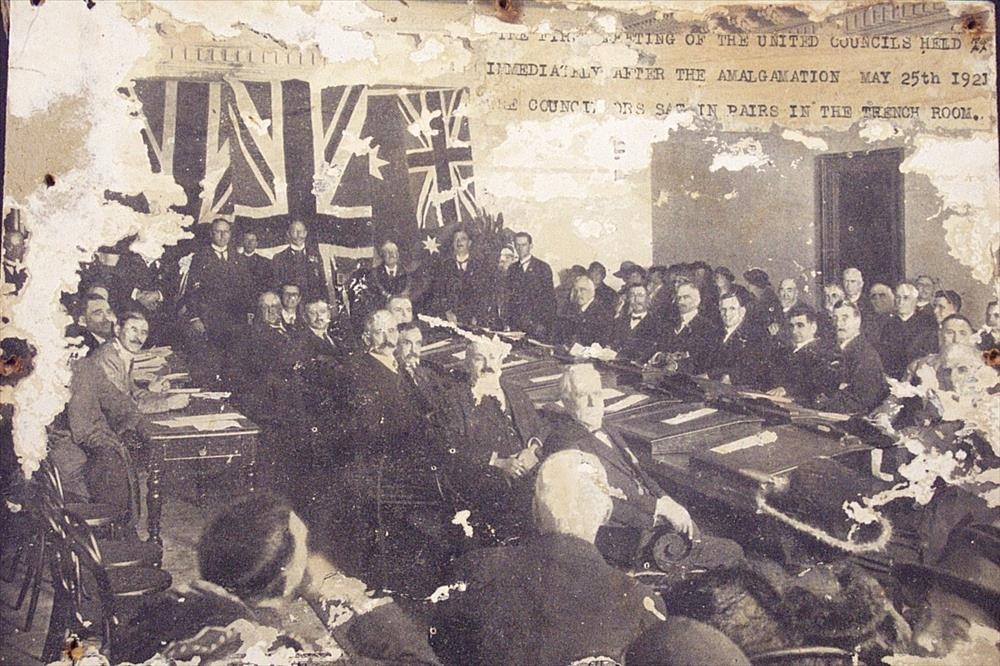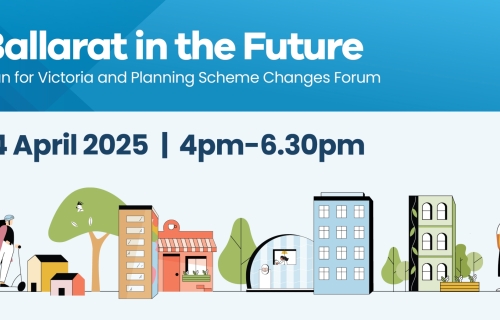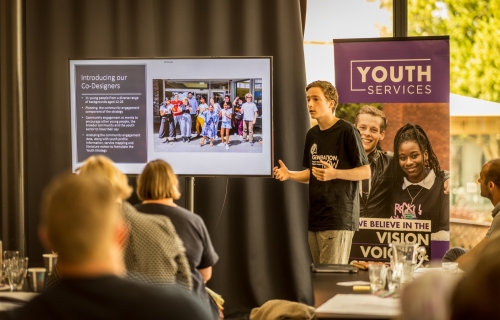East meets West – City of Ballarat marks 100 years of Amalgamation

On 25 May 1921 the two townships of Ballaarat East and Ballaarat West amalgamated.
The municipalities had been divided for 70 years but discussions in 1913 over the impending sewerage system development were a strong influence in seeking amalgamation.
According to the Melbourne Age on 27 August 1920 a public poll revealed the amalgamation was unanimously supported by the more culturally and business orientated West municipality but not so by the largely working class East. The West supported the amalgamation with a majority of 1,120 and the East supported it with a majority of only 60.
On 25 May 1921 the municipalities came together under amalgamation, Councillors from both townships kept their positions for one year before retired and a new City of Ballaarat Council was voted in. The sewerage construction commenced on 6 Dec 1922.
Ballarat Mayor Cr Daniel Moloney commented that “One hundred years on to the day it is opportune to reflect on a regional city facing waste challenges of a different type. Our future is about a cleaner, more energy and waste efficient sustainable environment. A city where local business, the community and the Council all play a role in ensuring in another 100 years Ballarat remains an enviable community in which to work, live and play.”
In more recent times in 1994 it was the amalgamation of the former City of Ballaarat, the Shire of Ballarat, the Borough of Sebastopol and parts of the Shires of Bungaree, Buninyong, Grenville and Ripon that gave rise to Ballarat as we now know it.
This amalgamation was part of the Kennett government’s sweeping changes to local councils in Victoria, which saw the number of municipalities reduced from 210 to 78 (then increased to 79 with the split of shires of Benalla and Mansfield). According to local reports it was a trying time and reactions to Ballarat’s new ‘super council’ were mixed.
“The joining of East and West a century ago and the more recent amalgamation of local shires in 1994 shows how throughout our storied history Ballarat has adapted and changed to meet the challenges of the day, Mayor Moloney said.
“ As it was then and is now, it is that capacity to overcome our differences that make us stronger and more resilient as a community.”
More news

Ballarat in the future planning forum
Unsealed roads program creates safer roads
HIDDEN: A quest for the culturally curious through Ballarat’s heritage spaces

Federal action required to drive regional growth

Youth Profile 2024 provides valuable insight into Ballarat’s young people
The key issues being faced by Ballarat’s young people are now clearer after an initiative led by the City of Ballarat.
